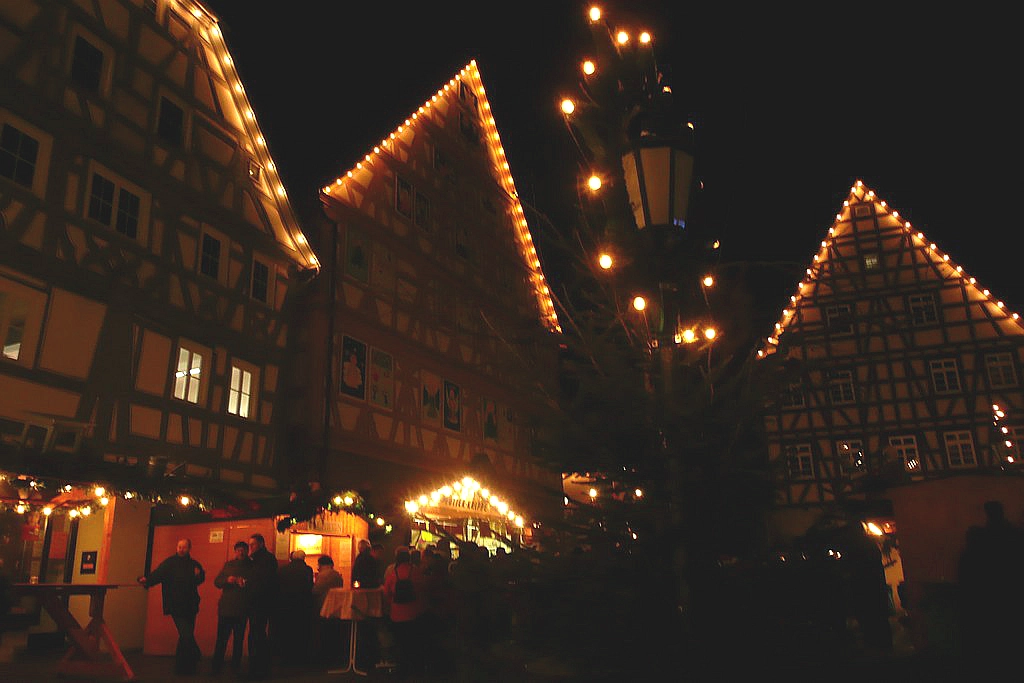Last Updated on December 6, 2023
It’s Christmas markets time and you can see a lot of unknown sweets there. Let’s study German Christmas desserts. Nowadays you can see most of them in a mass assortment of stores, but originally they were a special dish of a city or region that could only be tasted there, so they are often named after a particular city.
We have already descrive typical German Christmas cookies: Christmas cookies in Germany.
This post is about Christmas German cake, “fruit bread”, German gingerbread and other regional specialities.
German festivals in December – January
Chestnuts in Germany (Esskastanien, Maronen)
Simple Christmas decoration ideas
Broom on the house. What is Besen?
What is Wichteln
Carnival in Germany
German holidays in April, May, Juny. Ostern, Maifest and Fronleichnam and others between
Swabian-Alemannic carnival in Rottweil
Sweets common to different German regions are gingerbread (Lebkuchen) and marzipan, although different cities/regions have different recipes and different forms.
There is a warning for all recipes: do not add all the spices you see in the recipe at once. At least smell it first and decide, whether you like it. In my opinion, a lot of what is sold is too filled with all sorts of additives. And I suspect it is rose water that is to blame for the fact that many marzipans smell like old hair salon cologne.
Orangeat and Zitronat are candied orange (lemon) peel.
Lebkuchen Gewürze – a small packet of spices for gingerbread, sold in stores during Advent
Raisins in Germany are sold in two types: light (Rosinen) and dark (Korinthen), both are used for Christmas German cakes and other desserts
Spices names:
Ingwer – ginger
Zimt – cinnamon
Nelke – clove
Kardamon – cardamom
Macis (Muskatblüte) – mace (flowers of nutmeg)
Piment – allspice
German gingenbread (Lebkuchen) variety
Gingerbread (baked goods made with honey and spices) have a long history. They came to Germany from Belgium through Aachen and were already mentioned in the records of Ulm in the 12th century. And already in the 14th century in Nuremberg, the profession of a gingerbread baker was recorded in the tax lists. Monasteries contributed to the spread. Lebkuchen were very popular due to their ability to be stored for a long time. Lebkuchen is often also called Pfefferkuchen (Pfeffer as a general name for spices, but the pepper itself is not included).
Each region has its own forms and slightly different recipes. German gingerbread sorts are divided into two main types: brown (with flour) and on wafers (little or no flour). Let’s list some of the regional options and talk in detail about six others.
It is typical for brown German gingerbread to store the base dough consisting of flour and honey/syrup for a long (and also very long) time (to form acids).
Coburger Schmätzchen (“Coburg kisses”): the base dough is stored in a cold place for a very long time, then hazelnuts, Orangeat and Zitronat and spices are added to it. They have the shape of round cookies about 3 cm in diameter. Invented by a Coburg baker in the 19th century.
Odenwalder Lebkuchen have different forms. Baked from honey (1 part), sugar syrup (1), flour (2), eggs (1), a little potash and standard spices for gingerbread (cardamom, cinnamon, nutmeg flowers, cloves). The basic dough (flour, honey, syrup) is aged for three months.
Pulsnitzer Pfefferkuchen made in the Upper Sorbian town of Pulsnitzer near Dresden since the 16th century. They are distinguished by the predominant use of rye flour. The basic dough of flour, honey and syrup will keep for years. Gingerbread cookies are mostly rectangular in shape. Gingerbread cookies with a pointed edge are called Pulsnitzer Spitzen (with confiture and covered in chocolate). Local bakers aren’t afraid to create special variations, like cranberry.
There are also their own recipes in the former Prussian cities of Neisse (Nysa) and Legnica.
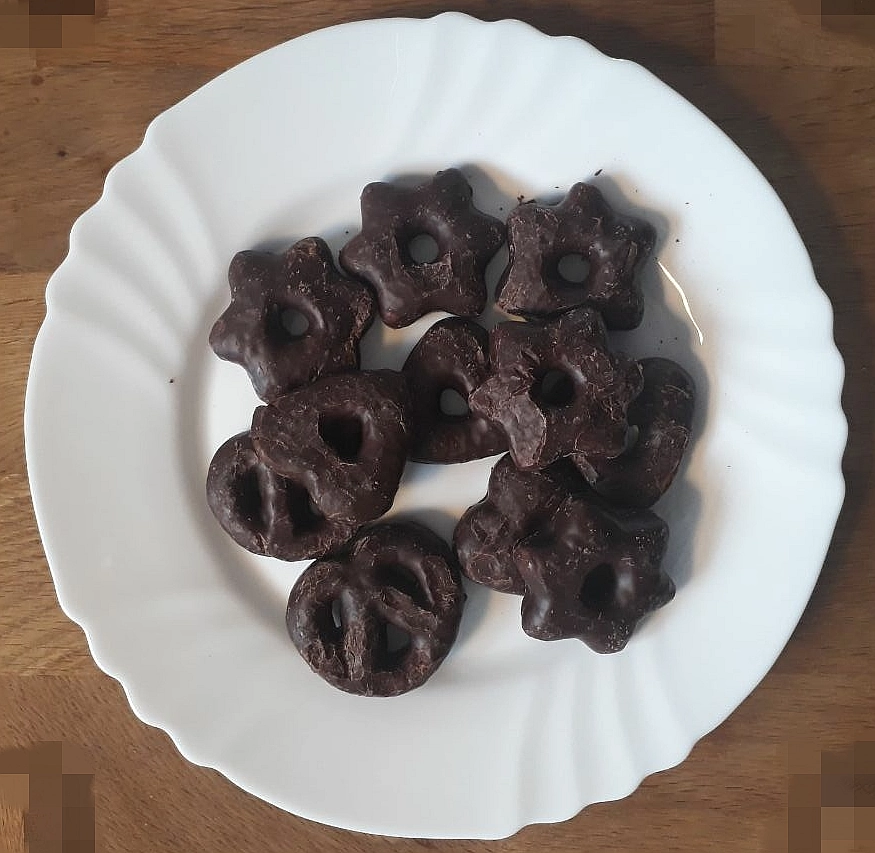
Gingerbread on wafers: Nürnberger Lebkuchen, Elisenlebkuchen
The name Elize, according to different versions, is attributed to the sick daughter of a baker, the patron saint of bakers St. Elizabeth or Countess of Brandenburg. Nürnberger Lebkuchen is a protected regional brand.
All of these Lebkuchen are baked on wafers and contain very little (10 percent or less) flour. Cover them with glaze or chocolate.
The recipe without any flour is as follows:
mix 2 eggs, 1 white and 250 grams of sugar until the sugar dissolves.
add a teaspoon each of cardamom, nutmeg flowers, cloves and ginger and a tablespoon of cinnamon.
add 400 g of ground almonds to the mixture.
The dough should be very dense (the spoon should stand). It is laid out on wafers. The dough should rest for 12 hours, then it is baked at 180 degrees for 25-30 minutes. Cooled gingerbread cookies are covered with sugar glaze (with rum or lemon juice).
Or:
100 grams of almonds, 100 grams of hazelnuts, 160 grams of Orangeat and Zitronat, 70 grams of brown sugar, 2 eggs, 20 grams of honey, a teaspoon of cinnamon, a little nutmeg, a little salt, cardamom, cloves, ginger.
Or with flour:
300 grams of almonds (ground and crushed 2 to 1), Zitronat and Orangeat 200 grams together, 70 grams of butter, a spoon of cinnamon and a spoon of Lebkuchen spice mixture, 150 grams of brown sugar, 2 eggs, 125 ml of milk, 250 grams of flour, baking powder.
Aachener Print
The name of the gingerbread from Aachen hints that gingerbread should be printed. This is how it was when gingerbread makers arrived in Aachen from Belgium. However, over time, the recipe was forced to change: the Napoleonic Wars disrupted the delivery of the necessary ingredients. Bakers switched to local products, and new dough could no longer be printed. So they just started cutting it into strips.
Per kilogram of flour use the same amount of sugar syrup and 200 grams of honey, 400 grams of brown sugar (another recipe does not contain honey and the ratio of flour to sweet is varied from 1:1 to 1 : 1.3).
Add 2 tablespoons of allspice, cloves, cinnamon, coriander and a little nutmeg (in other versions also anise, cardamom, ginger). And in addition, 10 grams of soda (or potash).
For the basic dough, sugar is melted in honey and syrup and mixed with flour and spices. The dough is kept in a cool place for up to a week (the longer, the better). Then they roll out and cut into rectangles. Bake for 20 minutes at a temperature of 200 degrees (however, it is better to lower the temperature, since when baking German gingerbread more than 180 degrees, a harmful substance is formed).
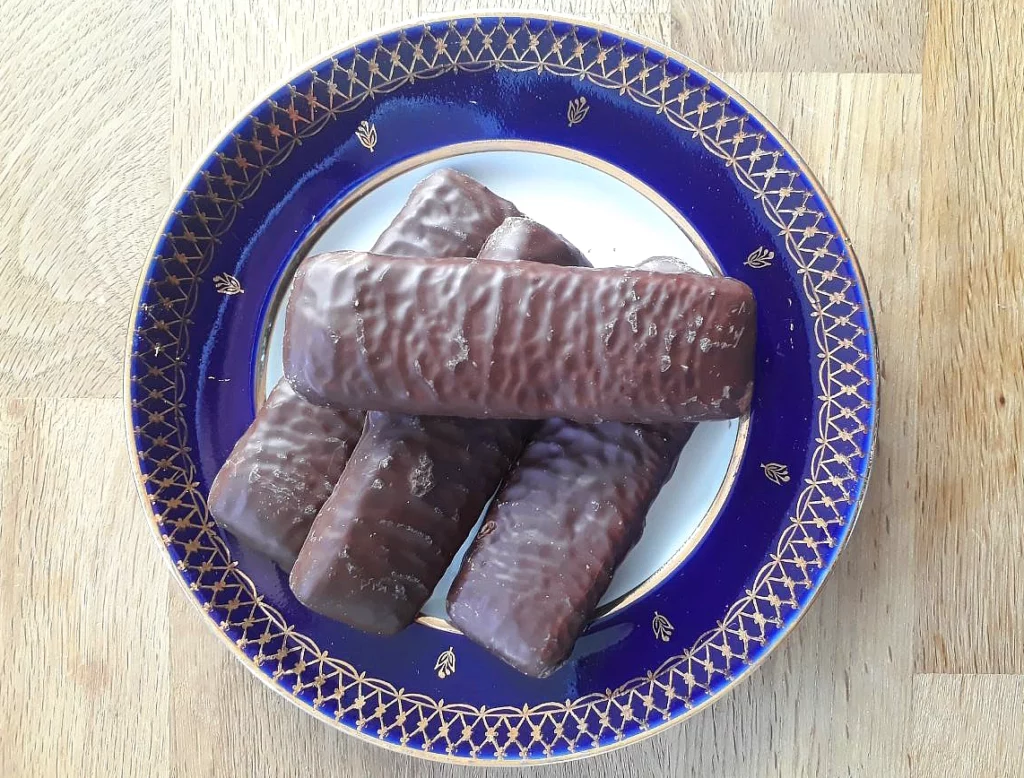
Dominosteine
Dominosteine is a relatively new invention by one particular patisserie who wanted to make pralines that were affordable for most. Fake pralines were invented in 1936 in Dresden. They consist (in layers from bottom to top) of half Lebkuchen, a quarter apricot or cherry jam and a quarter marzipan.

Magenbrot
Region: Southern Germany and Switzerland
Mix:
330 grams of flour, 180 grams of honey, 10 grams of butter, 8 grams of ABC Trieb (similar to soda),
a little cocoa, spices (a teaspoon of cloves, nutmeg, ginger, 75 grams of cinnamon, 15 grams of cardamom and almonds each), 100 ml milk.
Leave in the refrigerator overnight. Roll into cylinders 3 cm in diameter, press them on top to make them flatter. Bake at 180 degrees (up to 15 minutes). Cut into small pieces (1-2 cm). Leave for one day. Then cover with glaze.
Or:
300 grams of flour, 25 grams of cocoa, a tablespoon of cinnamon, 50 grams of sugar, 50 grams of honey, a package of baking powder, spices (a teaspoon of cloves, cardamom, a little allspice), 1 egg, 100 ml of milk. Bake in the same way.
Berliner Brot
This option is the least similar to gingerbread, more like a chocolate pie with nuts. There are a lot of recipes, so we will limit ourselves to the basic framework. Most of them offer a 1:1:1 ratio of flour, sugar and nuts. To this add 2 eggs, some cocoa, baking powder and half a packet of spices for lebkuchen. Then the variations begin. For example, chocolate (from a third to 1 part), apple marmalade (from a third to 1 part), sugar syrup or molasses are often added.
Ginger house
The German gingerbread house traces its origins to the fairy tale “Hansel and Gretel”.
For the gingerbread house you will need:
100 grams of butter
125 grams of sugar
275 grams of honey (or in another recipe sugar: honey 200: 200 grams)
600 grams of flour (up to 750 grams in other recipes)
1 egg
baking powdered sugar (or two tablespoons of baking soda)
spices for gingerbread
decorations (marmalade, sugar stars, etc.)
Glaze is needed for gluing. A strong glaze is made using egg white and powdered sugar. This raises the question of trust in eggs. Everyone decides for themselves or looks for powdered egg whites (I haven’t seen it in stores yet, apparently, you need to look online).
Mix everything, knead the dough. Print out the patterns you like from the Internet in advance, place the paper on the dough, and cut out the shapes. Bake for up to 15 minutes at 200 degrees. Cool, glue, decorate.
Read about different #insurance in Germany and what does public health insurance cover in Germany
Christmas German cakes
Christstollen
Region: Dresden, but spread throughout Germany. Dresdner Christstollen is a protected trademark. They managed to protect it already in the 17th century – then the Dresden bakers successfully fought off their rights from the encroachments of neighboring regions before the Elector. By that time, Christmas German cakes had already existed for more than two centuries, although they were somewhat different from what they are now in terms of filling with raisins and nuts.
Per kilogram of flour add 250 ml of milk, 400 grams of butter, 175 grams of sugar, 450 grams of raisins, 50 grams of Orangeat and Zitronat, 75 grams of yeast, 100 grams of fat, a little salt. The raisins are pre-soaked (a day before) in rum. Modern recipes also add almonds, which were not originally there.
For sprinkling: 200 grams of butter and 60 grams of sugar and powdered sugar.
Yeast is started in flour and milk with two tablespoons of sugar and left for 30 minutes. Then other ingredients are gradually added. The finished dough is left for 3 hours in a not too warm place. Bake at 180 degrees for an hour. Halfway through, cover with foil. While the pie is still hot, spread melted butter and sprinkle with sugar. Then apply butter again and cover with powdered sugar. Repeat butter and sugar, butter and powdered sugar again when the cake has cooled slightly. The cake is kept in foil for 3 weeks.

German fruit bread: Früchtebrot, Hutzelbrot, Kletzenbrot
The “bread” consists of five-sixths dried fruits and nuts and only one-fifth flour, that is, a different ratio than in the previous version. The dish originates from southern Germany.
For a kilogram of various dried fruits (these can be pears, figs, plums, raisins in the standard version), add another 250-300 grams of nuts. The fruits are pre-soaked, then nuts are added. All this is placed in flour with yeast (250 and 20 grams, yeast is started with a small amount of warm water for 10 minutes).
Knead, form the bread, let the dough rise in a warm place (60-90 minutes), bake for an hour – and the fruit bomb is ready.
German fruit bread stores well in a cool place. It is often served at Christmas.
Bremer Klaben
Another version of yeast bread, this time mainly with raisins.
For a kilogram of flour you need 750 grams of raisins, 500 grams of butter, 250 ml of milk, 125 grams of yeast and 100 grams of sugar. For another 250 grams, you can add Zitronat and/or ground nuts (or replace them with raisins, since the ratio with flour is one to one). Also add a little salt and cardamom.
The sequence of actions is standard:
start yeast in flour in 100 ml of milk with one spoon of sugar, add butter and the remaining sugar on top, leave for 10-15 minutes for the process. Knead the dough with the remaining milk and spices, add raisins and nuts. Leave everything for an hour. Bake for an hour at 200 degrees. After baking and cooling, the cake is kept for 5 days in foil in a cold place.
Now you can go on a long voyage, because the pie was baked for sailors already in the 16th century (did they really have that many raisins?).
[yarpp]Marzipan
Marzipan has been known for a very long time, and came from the east through Spain and Italy. In Germany, the main marzipan city is Lubeck.
The recipe for marzipan dough is simple: it’s just almonds with sugar in a two to one ratio. To make it at home, it is recommended to take whole, raw almonds, boil them, skin them and grind them. Next, it is mixed with a small amount of liquid (for example, rose water) and powdered sugar. In production, marzipan dough is also heated to reduce the amount of water. The resulting marzipan dough is then used to make marzipan itself.
Only those sweets that contain at least 50 percent marzipan dough can be sold under the name “marzipan”. “Noble marzipan” (Edelmarzipan) has at least 70 percent.
There is also marzipan for the poor – persipan. In this case, apricot and peach kernels are used instead of almonds. If you, like me, ate apricot kernels as a child, you know that they are bitter. Persipan will also have this taste.
The number of marzipan products cannot be listed. The simplest and most common form is marzipan bread (Marzipanbrot), followed by balls (for example, Mozart balls) and marzipan figures (figures are popular in Franconia) and numerous marzipan pralines.
Posts about #Franconia
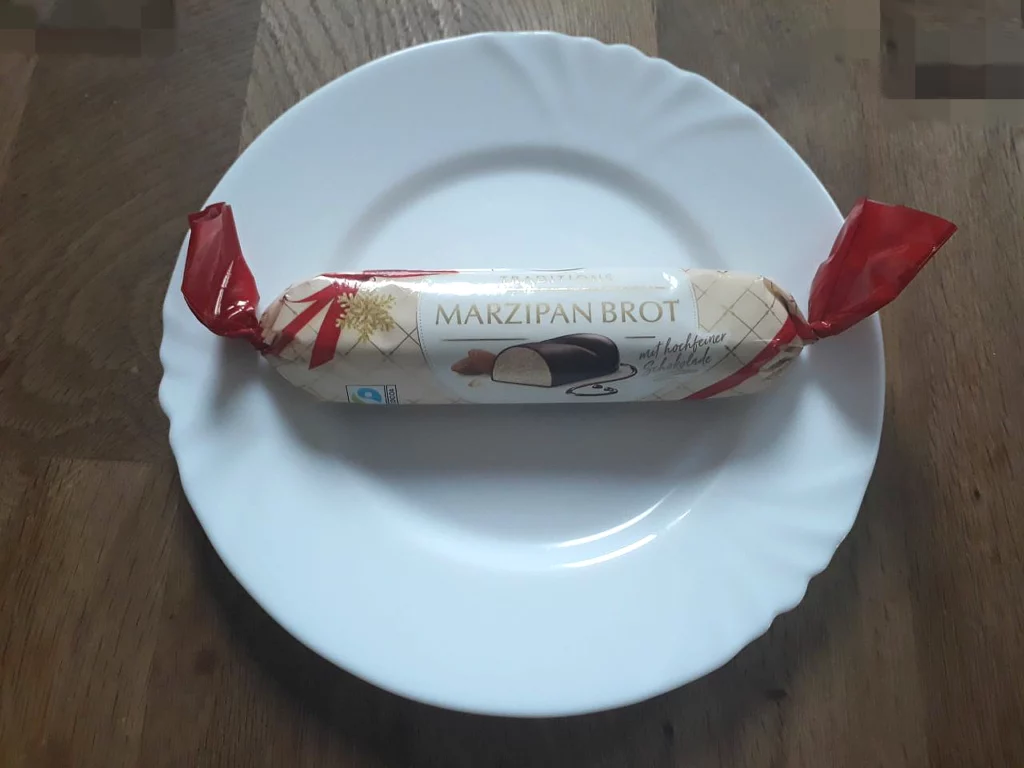
Lübeck marzipan
Lübeck marzipan is a protected mark. It consists of at least 90 percent marzipan dough. The Niederegger company (founder of the marzipan production in Lübeck) makes sweets from 100 percent marzipan dough.
Marzipan potatoes
There is no need to buy this sweet at all – it is made in five minutes from ready-made marzipan dough and powdered sugar.
Take 200 grams of marzipan dough and mix with 100 grams of powdered sugar. That is, the original dough is further diluted with sugar to a ratio of 4 to 5. For better mixing, use a couple of spoons of flavored water. Small balls are formed from the mixture. They are dipped in cinnamon or cocoa or a mixture of both. You can use other flavoring additives according to your taste and imagination.
Water, as always with powdered sugar, should be added a very little at a time. It turned out too sweet in my opinion.
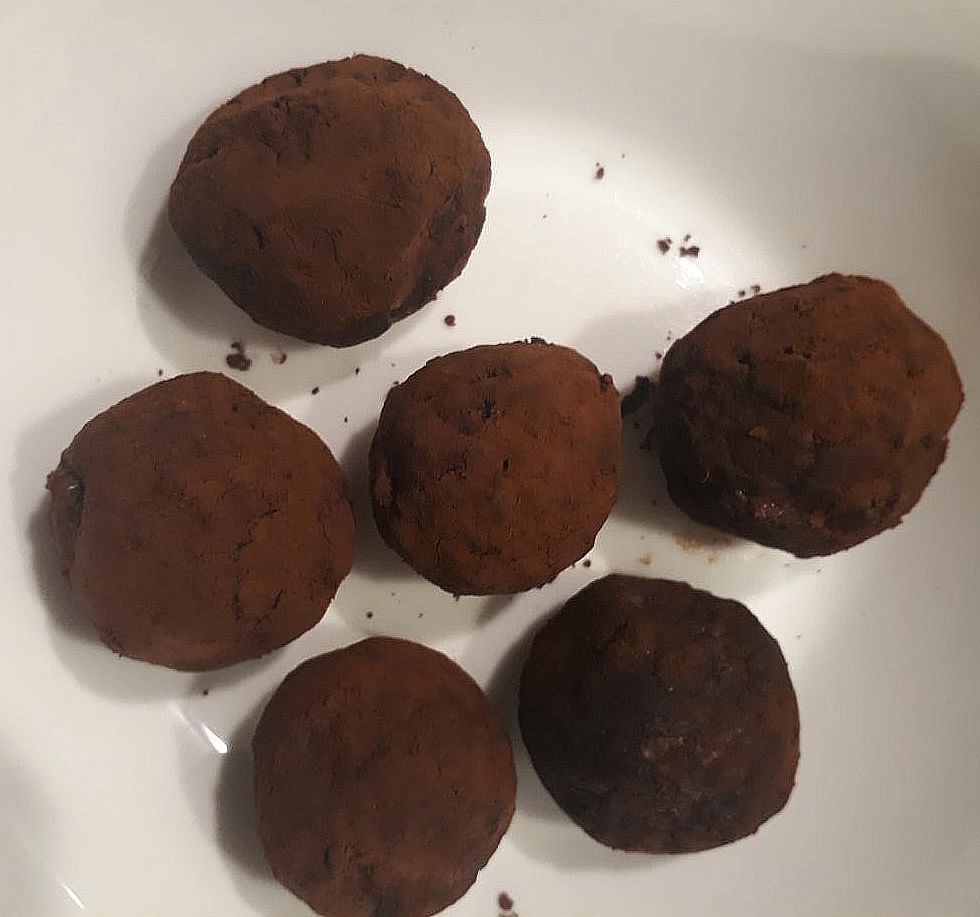
Frankfurter Bethmännchen
This special Frankfurt sweet is made in much the same way as marzipan potatoes, with the difference that it is baked.
250 grams of marzipan dough are mixed with a couple of tablespoons of fine sugar (what is called Fein) and formed into balls. For mixing and flavoring, add very little (drop by drop) flavored water. The balls are decorated with almond halves. They are left overnight. The next day, the balls are coated with a mixture of white and sugar and placed in the oven for 15 minutes at 100 degrees.
According to another recipe, another 40 grams of flour and 65 grams of ground almonds and white are added to 250 grams of dough and 80 grams of sugar. And cover with a mixture of sugar and yolk. Bake in this version for the same 15 minutes, but at 150 degrees.
Attractions around Frankfurt am Main, along the Rhine to Koblenz
Leipziger Lerchen
Region: Leipzig
They say that the cakes were invented to replace the larks pies, the hunting of which was prohibited. The cakes are closed shortcrust pastry baskets filled with confiture and sugar with almonds (= marzipan)
For half a kilo of flour, 250 grams of butter, 150 grams of sugar, 2 eggs – make shortbread dough and put in a cold place.
Beat 250 grams of butter (remove from the refrigerator in advance, it should be warm), add 300 grams of powdered sugar, 2 yolks, 300 grams of grated almonds, 150 grams of flour, 2 tablespoons of starch. Beat 8 egg whites and carefully add to the mixture. Beat 500 grams of confiture separately.
Divide the dough into cake tins. Spread each mold with confiture and place the marzipan filling on top. Cover with a dough lid and place dough strips crosswise on each one.
Other dough German Christmas desserts
Snow ball
Region: Rothenburg ob der Tauber
Heavy balls of shortcrust pastry with various additives (various types of chocolate, just powdered sugar, egg liqueur, caramel, etc.) are sold in markets in the regions around Rothenburg.
To prepare, you need a special form in the form – it is dipped into hot oil.
The dough contains 1 part butter, 5 parts flour, 1.5-2.5 parts sour cream, 2 eggs and 2 yolks. The dough is rolled out thinly and cut into strips, leaving the edge uncut. Then they lift every second strip with a stick, put it in a form and send it to the deep fryer. Without a form snow balls will look like lumpy cakes, but in a form they will become balls.
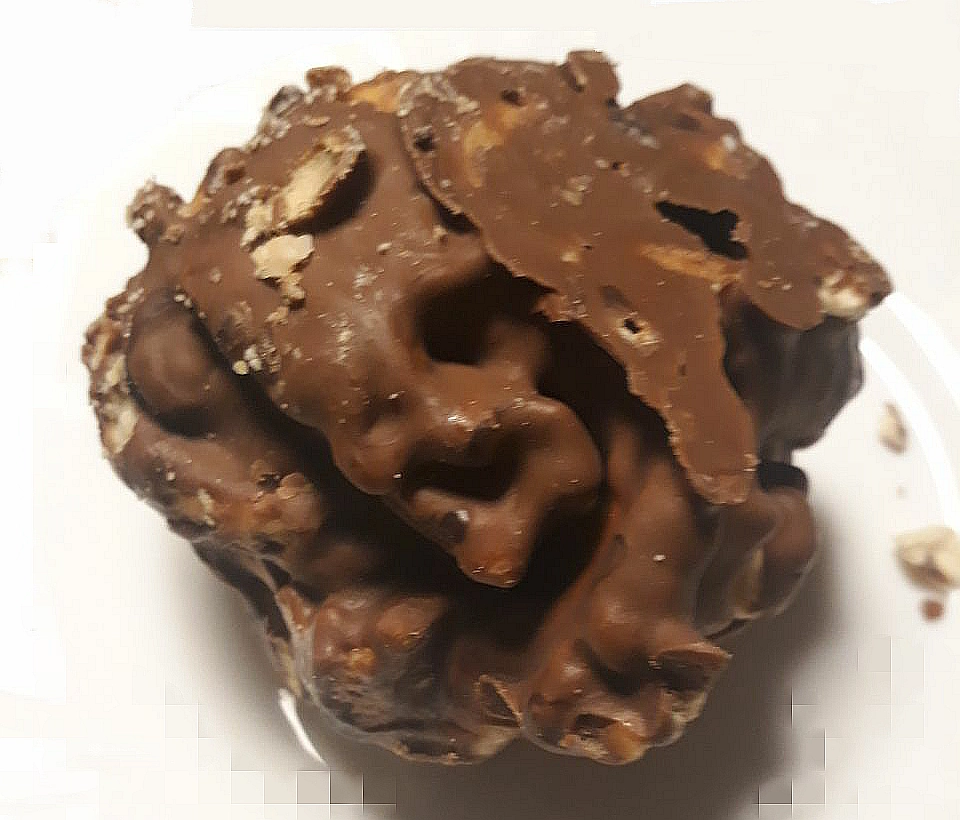
Spekulatis
Origin: Holland or Belgium, or maybe Germany
Printed spiced sugar cookies.
Ingredients: per kilogram of flour 500 grams of sugar, 200 grams of ground nuts, a spoonful of spices (cardamom, cloves), 2 tablespoons of cinnamon, 4 eggs, 350 grams of butter. 2 packs of baking powder. Mix everything (cold butter, cubes), let the dough rest for 1 hour in the cold. Roll out and cut out shapes. For speculation, they sell special videos with pictures. Bake for 10-15 minutes at 200 degrees.
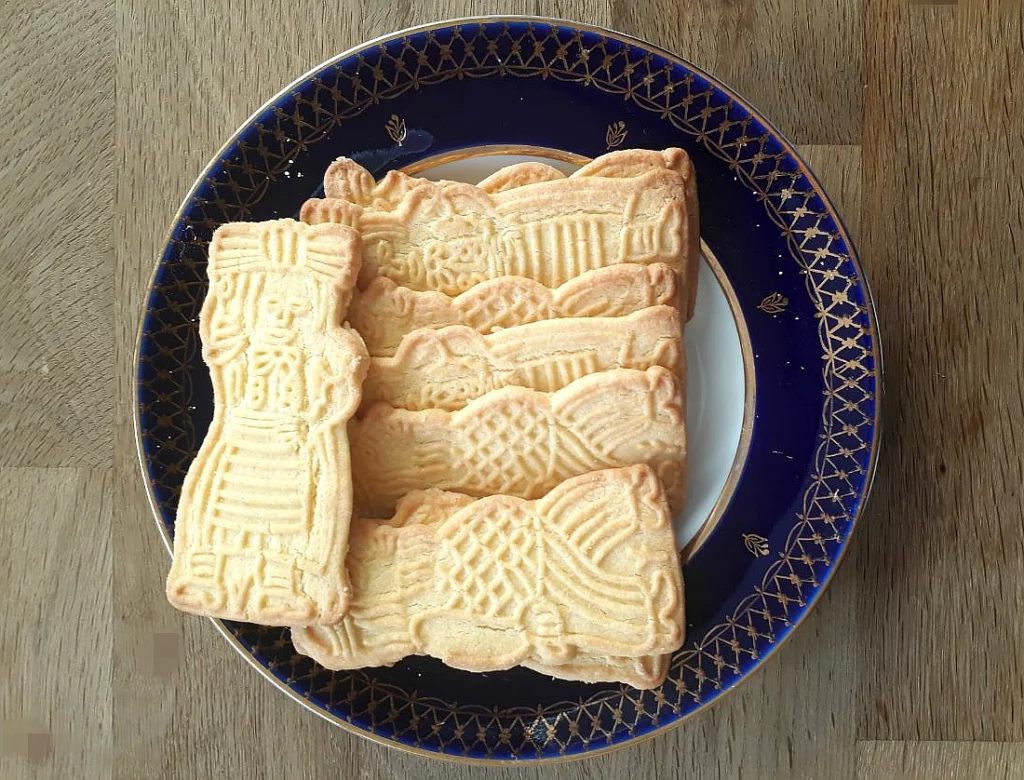
Bentheimer Moppen
Region: Lower Saxony
Shortbread dough and spices: cumin (Kümmel), anise, cinnamon. It has the shape of a round cake 3-4 centimeters in diameter.
Contains 250 g flour, 125 g butter, 1 egg, baking powder and 150 g sugar. Add spices to taste (about 1 spoon of each). Before baking, let the dough rest in the refrigerator for a couple of hours.
Bremer Kaffeebrot
It’s practically hard chuck with sugar. First, simple yeast bread is baked using flour, water and yeast. Then it is cut into sandwiches, dipped in water/melted butter and cinnamon sugar and baked until it becomes crumbs.
Swabian Wibele and Springerle
These two recipes come from Swabia. They are very similar to each other in ingredients and preparation and resemble meringues with the difference that no flour is added to the meringue.
Springerle – printed cookies; special wooden molds are sold for them (or passed on by inheritance). But you can also cut it with regular forms. Wibele, which was (and is) prepared at the court of Hohenlohe-Langenburg, is shaped like a small figure eight (two very small round flatbreads).
For Springerle:
beat four eggs until foamy, add 500 grams of powdered sugar and beat again.
Slowly, spoon by spoon, mix in 500 grams of flour, 2 tablespoons of baking powder and flavoring (classically 2 tablespoons of anise, but modern Swabians are experimenting).
Leave the finished mixture in the refrigerator for at least 2 hours, well covered.
Roll out thick dough (8 mm), cut out shapes. Leave to dry for a day until the top surface becomes hard. This is done so that the design does not get lost during baking.
Before baking, moisten the bottom surface of the cookies by placing them on a damp towel. Bake for 10 minutes at 150 degrees and another 10 at 125 degrees. Store in a damp place (on the balcony or in the basement).
Wibele: beat 5 egg whites until foamy, add 250 grams of powdered sugar and beat again, slowly add 1 package of vanilla and 200 grams of flour.
Squeeze two peas side by side from a pastry bag. Leave to dry overnight.
Bake for 7 minutes at 175 degrees. The wibele should not be overcooked, they should be light brown.
German festivals in December – January
Chestnuts in Germany (Esskastanien, Maronen)
Simple Christmas decoration ideas
Broom on the house. What is Besen?
What is Wichteln
Carnival in Germany
German holidays in April, May, Juny. Ostern, Maifest and Fronleichnam and others between
Swabian-Alemannic carnival in Rottweil
Do you enjoy the site without cookies and maybe without ads? This means that I work for you at my own expense.
Perhaps you would like to support my work here.
Or Cookie settings change: round sign bottom left
Follow me

